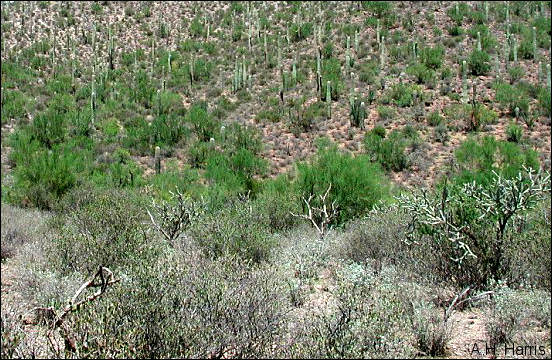

Why doesn't—fill in the blank with an animal or plant—occur here in our desert? Too often the easy answer is that the environment isn't suitable. Although that's possibly true, there are a number of other reasons why a given organism may be absent from a place.
One of these is that possibly the present environment is ideal, but has changed to this present one so recently that a given organism hasn't had time to get here from elsewhere. We know from fossil records that plants living happily together now took far different lengths of time to arrive at recently unglaciated areas in the north. Such time lags undoubtedly are common.
On the other hand, some ecological barrier may divide suitable areas,
barring entry from one side of the barrier to the other. A third possibility is that
the environment is perfectly suitable except for the presence of a single
competitor—a competitor strong enough to exclude the organism under
consideration. So, don't always go for the obvious, for in the long run you may be
obviously wrong!

Listen to the Audio (mp3 format) as recorded by KTEP, Public Radio for the Southwest.
Contributor: Arthur H. Harris, Laboratory for Environmental Biology, Centennial Museum, University of Texas at El Paso.
Desert Diary is a joint production of the Centennial Museum and KTEP National Public Radio at the University of Texas at El Paso.

A desert landscape near Tucson, Arizona. Several of the plants, especially the Saguaro so prominent in the background of the photograph, do fit the easy answer of unsuitability of the environment in the Chihuahuan Desert—winters are too cold for survival of Saguaro seedlings.